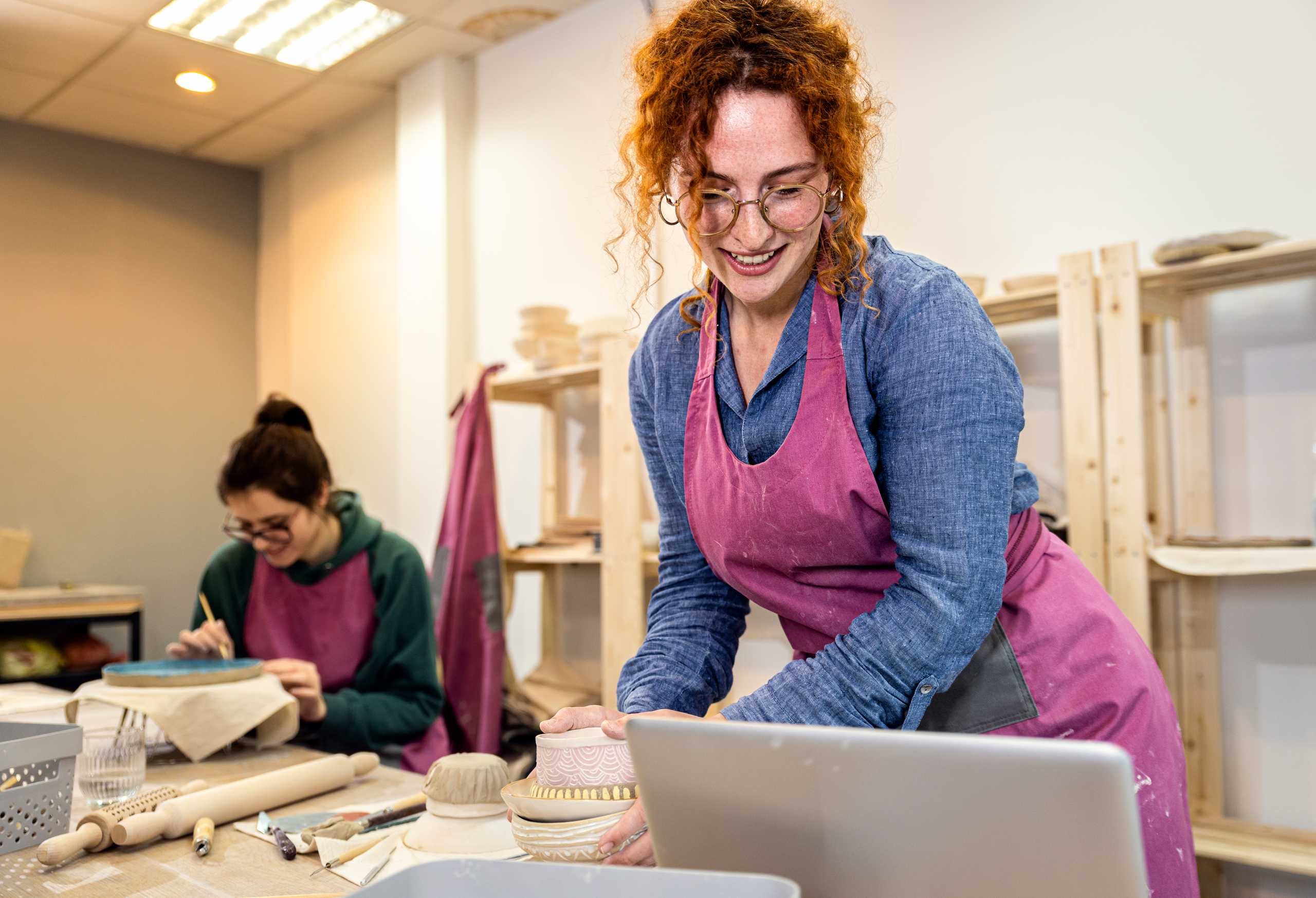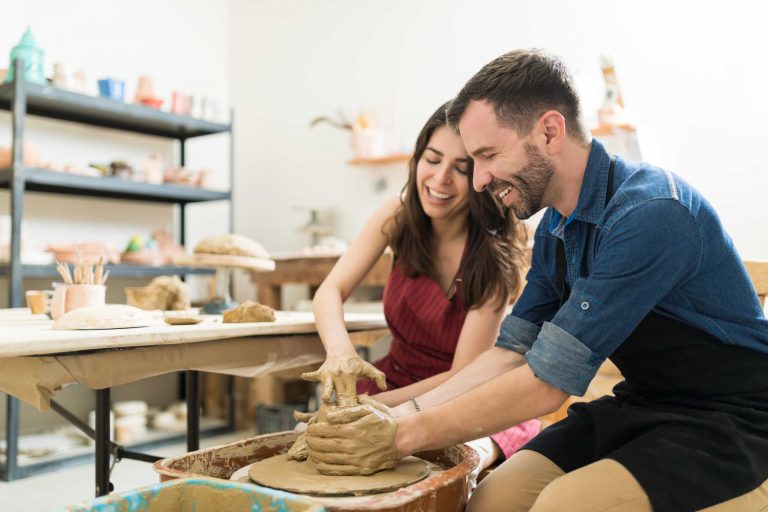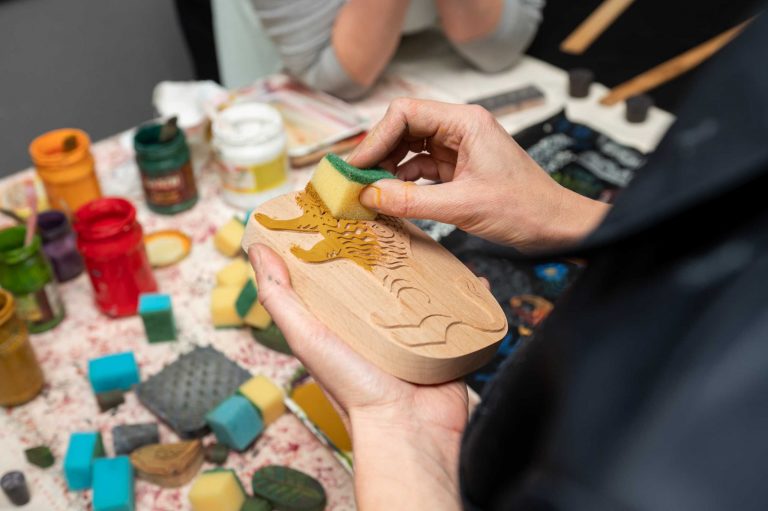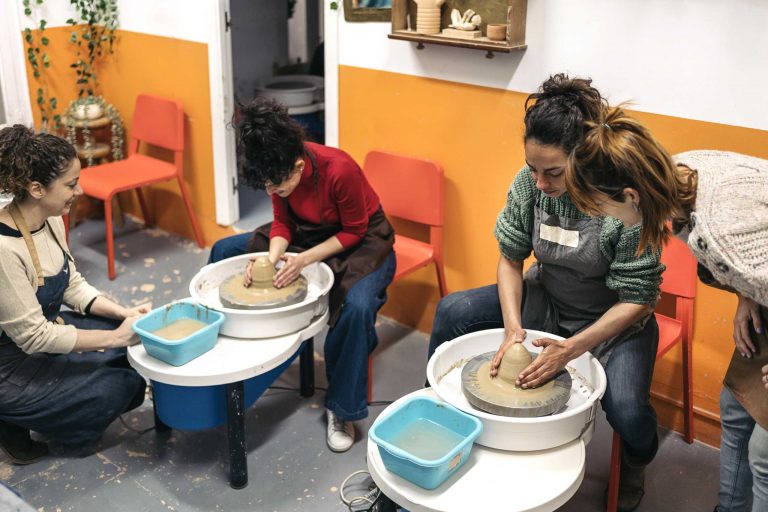Book Appointment Now

The Therapeutic Benefits of Pottery
Pottery is not just an art form; it is also a powerful tool for mental well-being. Working with clay engages the mind and body, offering a therapeutic experience that reduces stress, enhances focus, and fosters creativity. At ClayForge, students discover that the studio is not only a place for skill development but also a sanctuary for mindfulness.
Stress Relief Through Clay
The tactile nature of clay has a calming effect:
- Hands-On Engagement: Kneading, shaping, and molding clay allows the mind to focus solely on the present moment.
- Rhythmic Movements: Repeating techniques such as wheel throwing or pinching creates a meditative flow.
- Sense of Achievement: Completing a piece brings satisfaction, reinforcing positive emotions.
The physical interaction with clay naturally reduces tension and promotes relaxation.
Enhancing Focus and Concentration
Pottery requires attention to detail, which helps sharpen mental focus:
- Step-by-Step Process: Each stage—from wedging to glazing—demands careful observation.
- Problem Solving: Adjusting shapes, correcting imperfections, and experimenting with glazes hones analytical thinking.
- Mind-Body Coordination: Coordinating hands, eyes, and body movements enhances concentration and awareness.
These aspects make pottery a mindful practice that balances creativity with mental clarity.
Boosting Creativity and Expression
Working with clay nurtures imagination and self-expression:
- Freedom to Experiment: Students explore textures, forms, and colors without rigid rules.
- Emotional Outlet: Translating feelings into shapes and designs provides a non-verbal way to express emotions.
- Continuous Discovery: Every creation is unique, encouraging innovation and personal growth.
Clay becomes a medium through which both technical skill and personal expression flourish.
Community and Connection
Being part of a supportive pottery community enhances the therapeutic experience:
- Shared Learning: Interacting with instructors and peers provides inspiration and motivation.
- Collaborative Projects: Group activities foster social bonds and creative exchange.
- Celebrating Success: Exhibiting work and receiving recognition reinforces self-esteem and confidence.
The social dimension of ClayForge makes every class enriching, both emotionally and creatively.
Conclusion
Pottery offers far more than artistic satisfaction—it is a holistic practice that nurtures mental well-being, focus, and creativity. At ClayForge, every student can experience the therapeutic benefits of clay, finding peace, purpose, and joy in every creation. Through the art of pottery, the studio becomes not only a classroom but a place of reflection, growth, and personal fulfillment.



